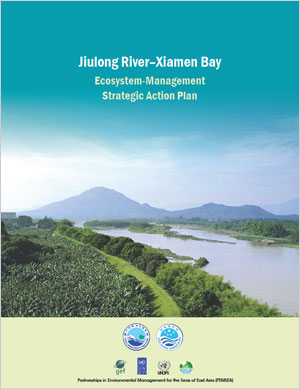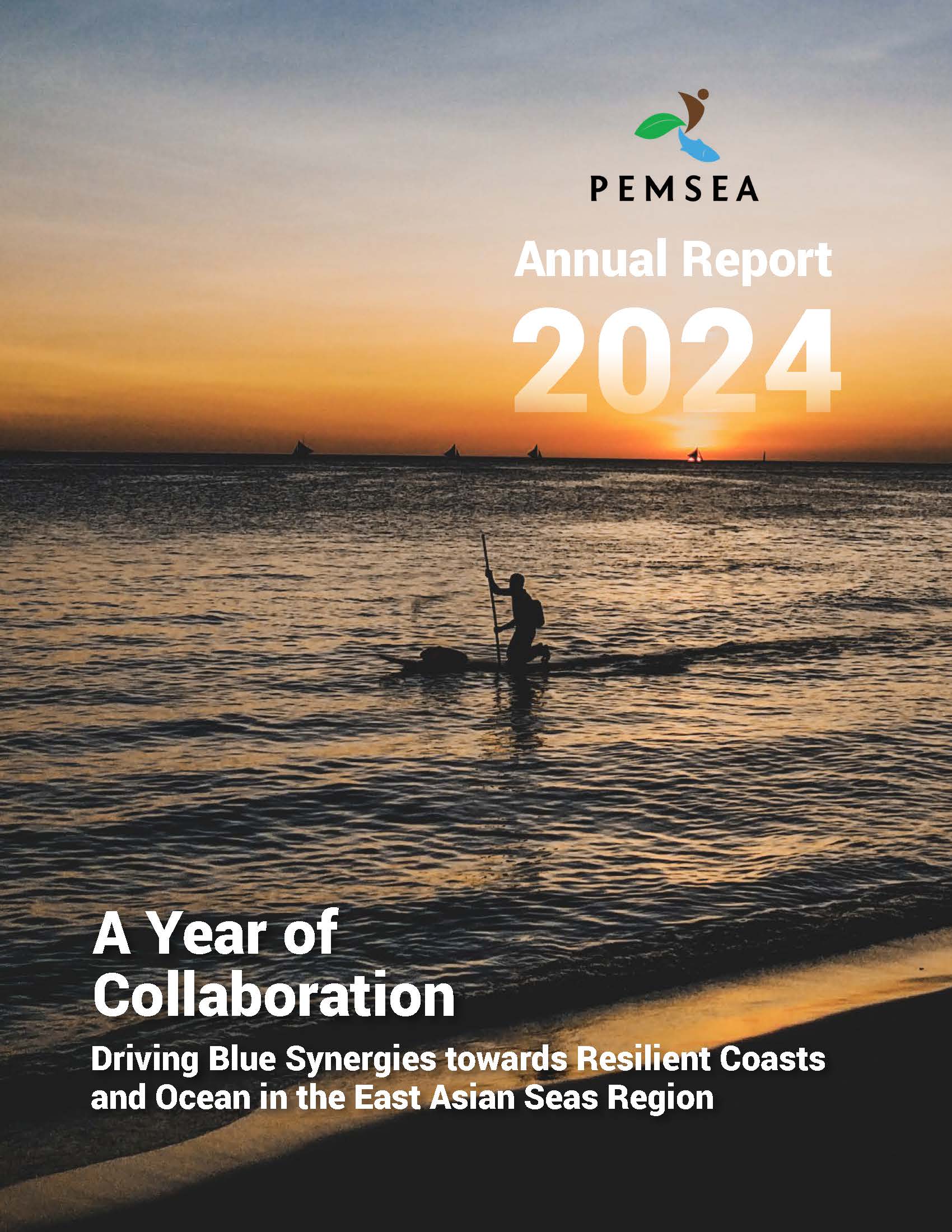
Breadcrumb
Jiulong River-Xiamen Bay Ecosystem Management Strategic Action Plan
PUBLICATION DATE:
Sunday, July 01, 2012
PUBLICATION TYPE:
Reports
STATUS:
Only Available Online
DESCRIPTION:
The objective of the Ecosystem-based Jiulong River and Xiamen Bay Management Strategic Action Plan (JXSAP) is to establish a trans-jurisdictional Jiulong River and Xiamen Bay ecosystem management framework involving the city of Xiamen, Zhangzhou and Longyan. Based on an ecosystem approach, the JXSAP has identified and analyzed key environmental problems, developed a Jiulong River–Xiamen Bay pollution mitigation plan, ecological conservation and management plan and a monitoring program. Jiulong River is the second longest river in Fujian Province, a major source of pollutants to Xiamen Bay as well. In recognition of the environmental impact of upstream pollution, the Fujian Provincial Government approved a comprehensive water pollution and ecosystem rehabilitation project in 1999, which involved adoption of a number of policies and regulations on water pollution prevention and treatment and investment. Given the complexity of the river basin itself and the socioeconomic pressures from continued growth, the trans-jurisdictional ecological and environmental problems from the river basin to estuary remain unabated. From 1994 to 1998, the Xiamen Municipal government resolved sea use conflicts and coastal environmental pollution through an integrated coastal management (ICM) approach, including innovative legislation and institution arrangements, coordination by the municipal government, scientific support, joint law enforcement and public participation, with the assistance of the GEF/UNDP/IMO Regional Programme for the Prevention and Management of Marine Pollution in the East Asian Seas project. Based on the lessons learned from the water pollution and ecosystem rehabilitation project, and the success of the integrated approach to addressing environmental pollution and sea use conflicts, Xiamen began to scale up its ICM program. The up scaling involved integrating pollution control, ecosystem-based river basin management and Xiamen Bay management into a regional economic development initiative involving downstream and upstream cities. In 2004, Xiamen, Quanzhou and Zhangzhou established the City Alliance, an initiative among the three major cities in southeast Fujian to promote regional economic development. Longyan, a city at the upstream of Jiulong River, north of Zhangzhou City, became a member as well. While economic development topped the agenda of the Alliance, conservation of the water environment of offshore areas and maintenance of ecosystem services of Jiulong River were important elements proposed by the Municipal Government of Xiamen. During the implementation of the second phase of the Partnerships in Environmental Management for the Seas of East Asia (PEMSEA), the Xiamen Municipal Government developed and adopted an ICM Strategic Action Plan in 2005. Integral to the plan were: (a) strengthening the ICM program and the ICM coordinating mechanism; (b) establishing a regional coordinating mechanism and integrated land and coastal area management mechanism; (c) creating an integrated Jiulong River management coordination committee between Xiamen, Zhangzhou and Longyan; (d) establishing an integrated Jiulong River Management Action Plan; and (e) setting up an integrated Jiulong River Management financial mechanism. With the approval of the West Taiwan Strait Economic Zone in 2009, the incorporation of the integrated Jiulong River and Xiamen Bay management plan into the State economic development strategy gained further momentum. Under this framework, the Xiamen Ocean and Fishery Bureau commissioned a joint study by the Third Institute of Oceanography of the State Oceanic Administration (SOA) of China and Xiamen University to develop a strategic action plan for an ecosystem-based Jiulong River and Xiamen Bay management. The process involved field surveys, interviews with local communities and staff from the sectors of ocean, environment, agriculture and forestry of the three cities, collection of socioeconomic and ecological environment data, desk review of available management plans and management options, and data analysis. SOA and the National Oceanic and Atmospheric Administration (NOAA) of the United States provided generous support to the project team in scoping, problem analysis, and sharing of lessons from other river basins, in particular the Chesapeake Bay, through their experts. The objective of the Ecosystem-based Jiulong River and Xiamen Bay Management Strategic Action Plan (JXSAP) is to establish a trans-jurisdictional Jiulong River and Xiamen Bay ecosystem management framework involving the city of Xiamen, Zhangzhou and Longyan. Based on an ecosystem approach, the JXSAP has identified and analyzed key environmental problems, developed a Jiulong River–Xiamen Bay pollution mitigation plan, ecological conservation and management plan and a monitoring program. The ultimate aims of the plans are to enhance the management capacity of Jiulong River and Xiamen Bay, relieve pressure of Jiulong River on Xiamen Bay and ensure river-bay ecological safety. There is no doubt that implementation of the action plan will be advantageous to raising awareness of various stakeholder groups, promoting environment education of the public, establishing sustainable financing mechanisms between the river basin and the bay area, enhancing the coordination capacity between upstream and downstream cities and, ultimately, managing a living river basin and bay that can meet the needs of the present and future generations in the area.
RELATED PUBLICATIONS
Proceedings of the 2nd Blue Carbon Technical Working Group Meeting
The PEMSEA Resource Facility (PRF), in partnership with the National Marine Hazard Mitigation Service, Ministry of Natural Resources (NMHMS/MNR), convened the 2nd Blue Carbon Technical Working Group Meeting on 5–6 June 2025 in Haikou, Hainan Province of China. The meeting was attended by nearly 60 experts and stakeholders on blue carbon from 11 countries in the EAS region and beyond. The PRF Secretariat served as the Secretariat for the meeting. Online participants included members of the PEMSEA Network of Learning Centers and other Blue Carbon experts from the region.
The meeting aimed to:
- Draw consensus on the governance framework of an innovative Blue Carbon Ecosystem Services Management Mechanism (Draft 0) and the requirements to operationalize a regional blue carbon certification program.
- Improve understanding and consensus building among BC-TWG members on the draft regional blue carbon accounting protocol.
Expected outcomes of the meeting include:
- Refined concept of a Blue Carbon Ecosystem Services Management Mechanism, including a blue carbon stock monitoring network.
- Refined regional blue carbon accounting protocol.
- Refined workplan for 2025 and 2026 for review, guidance and/or approval at the 17th EAS PC in July 2025.
Proceedings of the Training on Integrating Blue Carbon into the Integrated Coastal Management (ICM) Framework
The PEMSEA Network of Learning Centers (PNLC), Burapha University and the PEMSEA Resource Facility co-organized the "Training on Integrating Blue Carbon into the Integrated Coastal Management (ICM) Framework" in March 2025 in Chonburi, Thailand.
The training, co-sponsored by Burapha University and the University of Hawai'i, with support from the Ministry of Higher Education, Science, Research and Innovation of Thailand, Thailand Science, Research and Innovation (TSRI), Henry Luce Foundation, and the Center for Southeast Asian Studies-University of Hawai’i, brought together PNLC participants and Chonburi Province coastal management stakeholders to enhance the understanding of Blue Carbon concepts and explore how the Network can support.
PEMSEA's regional Blue Carbon program. The training had the following objectives:
- Gain foundational understanding of ICM and its role in coastal resource management.
- Learn about the impacts of climate change on coastal ecosystems and communities.
- Understand the concept of Blue Carbon and its significance in climate change mitigation.
- Acquire the knowledge to integrate blue carbon principles into coastal management strategies, ensuring more sustainable and resilient coastal zones and harness the potential of blue carbon ecosystems as nature-based solutions for climate action.
- Identify work areas, in terms of knowledge, capacity and technical assistance, PNLC members need to strengthen to enable them to better support government and local community efforts in managing their coastal areas and associated blue carbon ecosystems.
Proceedings of the Thirty Third East Asian Seas Executive Committee Meeting
The East Asian Seas (EAS) Executive Committee convened its 33rd Meeting on 28 April 2025 in Busan, Republic of Korea. The meeting gathered key leaders of the EAS Partnership Council, including Chair Dr. Vann Monyneath, Co-Chair Atty. Jonas Leones, Intergovernmental Session Co-Chair Mr. Le Dai Thang, Technical Session Chair Dr. Keita Furukawa, and Technical Session Co-Chair Dr. Suk-Jae Kwon. The PEMSEA Resource Facility (PRF) Secretariat, led by Executive Director Ms. Aimee T. Gonzales, provided secretariat support, alongside other PRF staff. Observers included representatives from the Arafura Timor Seas program, Korea Maritime Institute, China’s Ministry of Natural Resources, and the China PEMSEA Center, with additional PRF personnel joining online.
The meeting agenda featured key updates and strategic discussions on the outcomes and next steps following the East Asian Seas Congress 2024, the alignment of the Sustainable Development Strategy for the Seas of East Asia (SDS-SEA) with 2030 targets, and PRF’s accomplishments in 2024 and work plan for 2025. Other agenda items included preparations for the 17th EAS Partnership Council Meeting, the engagement of Non-Country Partners, progress on the Blue Carbon Program, presentation of the 2024 audited financial report, and governance matters such as the election of new officers and the selection process for the next PRF Executive Director.
PEMSEA Annual Report 2024: A Year of Collaboration: Driving Blue Synergies Towards Resilient Coasts and Ocean in the East Asian Seas Region
2024 was a landmark year for PEMSEA with the successful organization of the EAS Congress 2024 and the 8th Ministerial Forum as key highlights. These milestone events led to stronger and renewed commitments to drive synergistic actions towards sustainable, inclusive and resilient coasts, ocean and communities, aligned with national priorities and global and regional targets.
Check out progress and plans of PEMSEA's projects that address complex interconnected environmental challenges in the region: marine plastic pollution, biodiversity loss and climate change through rigorous baseline data collation, analysis and reporting; enhancing governance and investment plans and programs; knowledge management and technical skills and capacity development.





